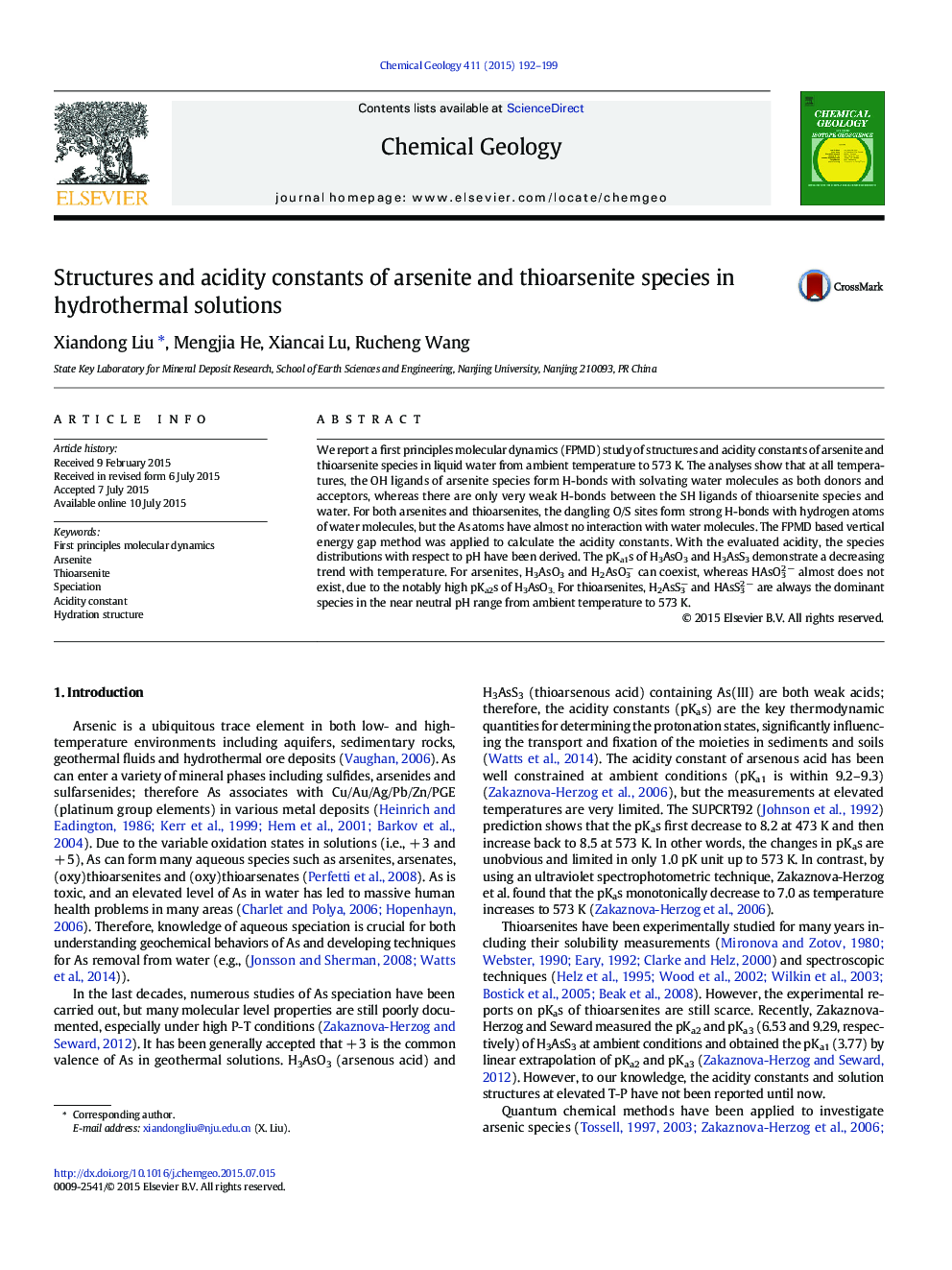| Article ID | Journal | Published Year | Pages | File Type |
|---|---|---|---|---|
| 6436334 | Chemical Geology | 2015 | 8 Pages |
â¢Hydration structures of arsenite and thioarsenite species are derived with FPMD from ambient to 573 K.â¢The pKas of H3AsO3 and H3AsS3 are computed with the FPMD vertical energy gap technique from ambient to 573 K.â¢H3AsO3 and H2AsO3â coexist in common pH whereas HAsO3â almost does not exist.â¢H2AsS3â and HAsS32 â are dominative thioarsenite species in near neutral pH ranges.
We report a first principles molecular dynamics (FPMD) study of structures and acidity constants of arsenite and thioarsenite species in liquid water from ambient temperature to 573Â K. The analyses show that at all temperatures, the OH ligands of arsenite species form H-bonds with solvating water molecules as both donors and acceptors, whereas there are only very weak H-bonds between the SH ligands of thioarsenite species and water. For both arsenites and thioarsenites, the dangling O/S sites form strong H-bonds with hydrogen atoms of water molecules, but the As atoms have almost no interaction with water molecules. The FPMD based vertical energy gap method was applied to calculate the acidity constants. With the evaluated acidity, the species distributions with respect to pH have been derived. The pKa1s of H3AsO3 and H3AsS3 demonstrate a decreasing trend with temperature. For arsenites, H3AsO3 and H2AsO3â can coexist, whereas HAsO32Â â almost does not exist, due to the notably high pKa2s of H3AsO3. For thioarsenites, H2AsS3â and HAsS32Â â are always the dominant species in the near neutral pH range from ambient temperature to 573Â K.
